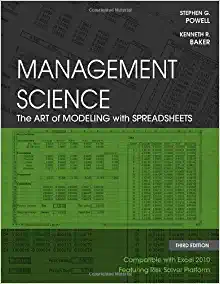Question
I'm having a hard time in my financial risk management class as these quizzes and assignments are not based off of lectures or materials available
I'm having a hard time in my financial risk management class as these quizzes and assignments are not based off of lectures or materials available in the book. I have several questions I need help working since the formulas are much more complex than what I am given. If you could show how each one is worked, that would be great!
#1. Compute
(delta) for the following call option. The stock is selling for $23.50. The strike price is $25.
The possible stock prices at the end of 6 months are $27.25 and $21.75.
#2. A stock is selling for $18.50. The strike price on a call, maturing in 6 months, is $20. The possible stock prices at the end of 6 months are $22.50 and $15.00. Continuous interest rate is 6.0%. How much money would you borrow to make a portfolio replicating the call payoffs?
#3. In the lecture example, a European call option on a with a $40 strike and 1 year to expiration. The stock pays no dividends, and its current
price is $41. The continuously compounded risk-free interest rate is 8%. The stock price in 1 year is either $60 or $30. Using the binomial model
we solve the call option price is $ 8.871. If the market price for the call is $8. You could set up the arbitrage portfoliop as follows, to _____ the
option, _____ the stock 2/3 of share and _____ $ 18.462 at 8%.
#4. Consider a European put option on the stock XYZ, with a $40 strike and 1 year to expiration. The stock does not pay dividends, and its current
rice is $41 The continuously compounded risk-free interest rate is 8%. The possible stock prices over 1 year is either $60 or $30. What are the payoffs
of the long put option when stock price is $60 or $30?
#5. Consider a European put option on the stock XYZ, with a $40 strike and 1 year to expiration. The stock does not pay dividends, and its current
rice is $41 The continuously compounded risk-free interest rate is 8%. The possible stock prices over 1 year is either $60 or $30. To find the replicating
portfolio, using
(delta) for the number of shares needed and y the amount of risk-free borrowing, we solve:
60
- y exp(0.08) = 0
30
- y exp(0.08) = 10
the solutions of
and y are:
#6. From the previous question, the signes of the solution for delta and y means the replicating portfolio of the put takes the ___ position of the stock and
____ positon of $18.462 risk-free asset.
#7. Consider a European put option on the stock XYZ, with a $40 strike and 1 year to expiration. The stock does not pay dividends, and its current
rice is $41 The continuously compounded risk-free interest rate is 8%. The possible stock prices over 1 year is either $60 or $30. What is the put
price using the binomial model?
Step by Step Solution
There are 3 Steps involved in it
Step: 1

Get Instant Access to Expert-Tailored Solutions
See step-by-step solutions with expert insights and AI powered tools for academic success
Step: 2

Step: 3

Ace Your Homework with AI
Get the answers you need in no time with our AI-driven, step-by-step assistance
Get Started


